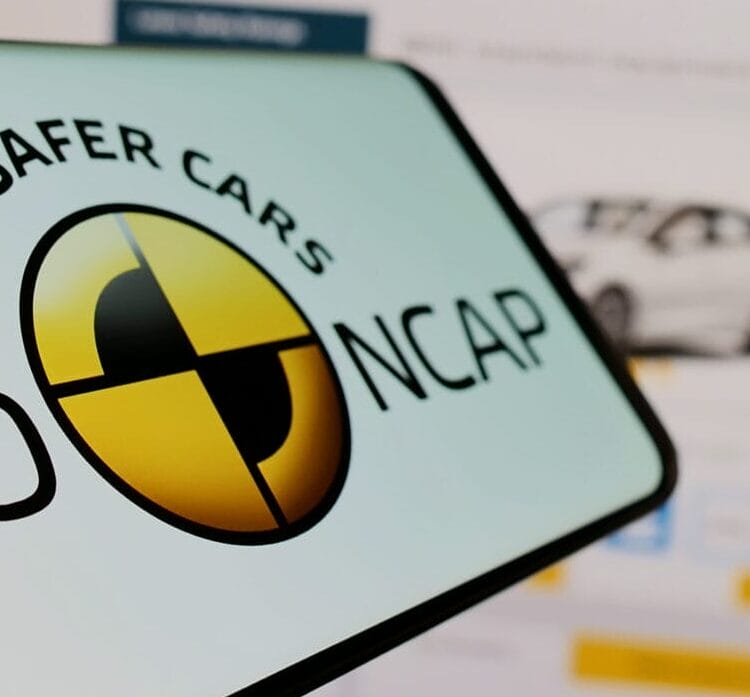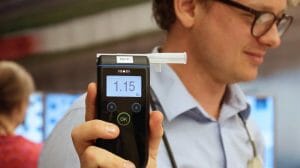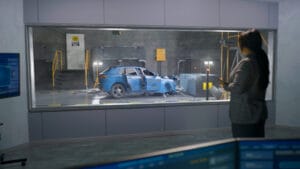EN


For decades, Euro NCAP has set the gold standard for vehicle safety ratings around the world. Known for being ahead of the curve, Euro NCAP often adopts new safety technologies years before they are mandated by legislation.
With the new 2026 Euro NCAP updates on the horizon, the automotive industry is eagerly anticipating which features and technologies to keep an extra close eye on.
While Euro NCAP’s full 2026 assessment protocol has yet to be published, Rikard Fredriksson, Senior Advisor in Vehicle Safety at the Swedish Transport Administration (Trafikverket) and board member of Euro NCAP, gave us an idea of what to expect in the webinar Navigating GSR and Euro NCAP: What Vehicle Manufacturers Should Know.
Let’s take a closer look at some of Euro NCAP’s most important updates for 2026—and how vehicle manufacturers can already start preparing.
 1. Stricter Requirements for Impairment Detection
1. Stricter Requirements for Impairment DetectionEuro NCAP’s 2026 updates are expanding the scope of what driver impairment means, pushing beyond drowsiness and distraction to cover a wider range of dangerous driving behaviors. For example, the new standards include alcohol and drug use as key factors. This means vehicles will need to detect these impairments using behavioral indicators rather than direct measurements like breathalyzers.
Key Updates:
● Alcohol and Drug Detection: Systems will need to recognize signs of alcohol or drug use, adding another layer to Driver Monitoring Systems (DMS).
This shift challenges technology providers to develop systems that can interpret a broader range of driver behaviors. For vehicle manufacturers, sourcing these advanced systems and integrating them into new models will be key to meeting these updated standards.
Vehicle safety systems are becoming more intelligent, and Euro NCAP’s 2026 updates are raising the stakes for what’s expected of seatbelt detection and occupant monitoring. The idea is simple: making sure that every passenger in the car is not only wearing a seatbelt but wearing it properly. This sounds straightforward, but the technology behind it is evolving fast.
Key Updates:
● Advanced Seatbelt Detection: Future systems will go beyond the basics, tracking not just whether the seatbelt is fastened, but also if it’s positioned correctly for maximum safety.
● Occupant Classification: These systems will also need to assess the size, position, and posture of each passenger. This will allow the vehicle’s restraint systems, like airbags, to adjust accordingly and optimize protection in the event of a crash.
As vehicle safety becomes more personalized, the technology behind it will need to be equally adaptable. For OEMs, this means investing in more sophisticated camera and sensor technologies, and ensuring these systems integrate seamlessly with the vehicle’s overall safety suite.

Crash avoidance technology is one of the most dynamic areas of vehicle safety, and Euro NCAP’s 2026 updates will push these systems to react faster and adapt better to real-world driving scenarios. The emphasis is on how these technologies work in tandem with driver monitoring to create a seamless flow of information between the driver’s behavior and the car’s safety response systems.
Key Updates:
● Earlier System Activation: Advanced crash avoidance systems like Automatic Emergency Braking (AEB) will need to engage sooner when they detect that the driver is inattentive or impaired. The goal is to prevent collisions before they happen, especially in high-risk situations.
● Adaptive Safety Features: Systems like lane-keeping assist will need to become more responsive, adjusting in real time based on the driver’s level of alertness or distraction. This ensures the car provides the right amount of assistance exactly when it’s needed.
The interaction between these systems and driver monitoring systems will be critical. It’s no longer enough for crash avoidance technologies to operate independently—Euro NCAP expects a tighter integration between driver behavior and vehicle response. This raises the bar for manufacturers, requiring more sophisticated sensors, quicker data processing, and a safety suite that can adjust in real time to dynamic road conditions.
Keeping up with Euro NCAP’s evolving standards means always staying ahead of the game. While 2026 feels like it’s still a bit down the road, manufacturers that begin preparing now will find themselves in a far better position to not just meet the new requirements, but also to use them to their advantage.
Key Considerations:
● Stay Informed: Vehicle manufacturers need to keep a close eye on updates from Euro NCAP, regulatory bodies, and the industry at large.
● Collaborate Early: Sourcing the right technology partners is critical. As safety systems become more complex, choosing the right driver monitoring, crash avoidance, and occupant safety solutions will define how smoothly the integration process goes.
● Competitive Advantage: Achieving high Euro NCAP ratings is a way to stand out in a competitive market. Vehicles that score well in safety rankings are increasingly attractive to consumers, making proactive preparation a smart business move as well.
Standing still is never an option in the automotive industry. While the exact details of Euro NCAP’s 2026 assessment protocol have yet to be made public, there’s no need to hit pause. By focusing on key areas like advanced driver monitoring, crash avoidance, and occupant protection, vehicle manufacturers will find themselves well-positioned once the final requirements are released.
